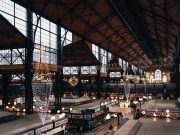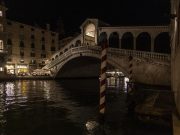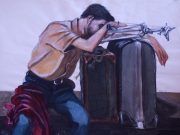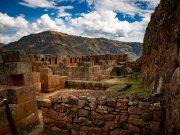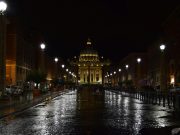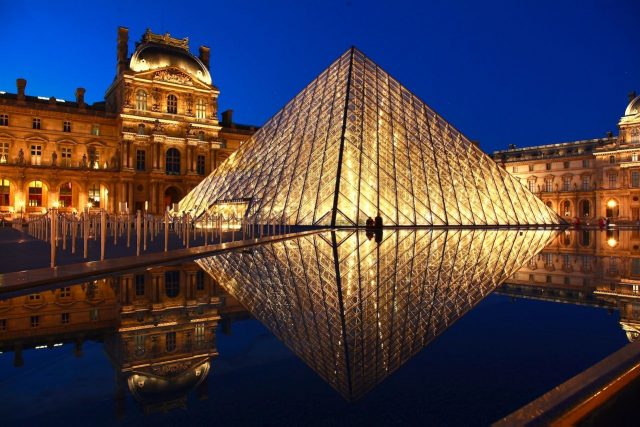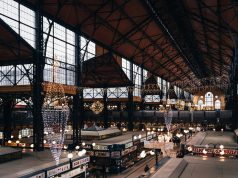
Without any hesitation, Dallongeville recommends the night visits (possible a few days per week). “Follow 5:00 PM and until 9:30 PM on Wednesdays and Fridays. Will probably be quiet, plus the atmosphere is entirely different at the end of the morning.” The museum closes at 9:45 PM, although the rooms are evacuated Quarter-hour previous to closing. Dallongeville also signifies that you avoid any school holidays, weekends, or peak summer times. “A dark Wednesday evening noisy . November is the foremost time, but when you’re in Paris in the summer, just make sure you’re going to the museum over a Wednesday night.” Check out the buisness hours and plan as well as you can.
Guided tours
If you’d rather enable the pros do every one of the heavy-lifting with regards to organizing your day, you will find three guided tours available at the Louvre, these perfectly done:
-
-
- Welcome for the Louvre — Louvre highlights
- Another Louvre — Hidden Treasures
- My First Louvre — Fun for all of the family
-
You’ll find some good information, but unlike getting a sound guide, you’ll manage to ask experts questions, that\’s invaluable. Book guided tours online to successfully employ a spot.
Where to get started on your visit


Dallongeville is unequivocal: it\’s essential to commence with the Louvre’s origins.
Before being the amazing museum it is, the Louvre was really a castle, the location of the kings of France. The well-preserved vestige of that castle may be seen in an underground chamber named the Pavillon de l’Horloge (room 130 on your map). The remains within the castle, and countless artifacts, put together while in the 1980s in the event the Louvre was extensively renovated. In this particular area of the museum, visitors will discover a model castle to assist them to visualize precisely what the Louvre appeared to be in the 12th century once it heats up was built. You’ll be walking where moats used to be, for the foot within the immense medieval structure.
Checking out those remains is a superb strategy to dive in the status for the museum before you actually walk its corridors and look at the skill pieces it houses. Furthermore, as it is deemed an underrated portion of the museum, you’ll receive some tranquility.
Five must-see pieces and why they matter
Dallongeville recommends that you just don’t only look at paintings rather try to see a variety of art pieces. “When you’re no expert, staring at lots of two-dimensional paintings may get very weary, so be sure to also have a look at three-dimensional objects in order not to get bored. There are thousands of furniture pieces, decorative objects, tapestries, sculptures, etc. which will stop you alert and interested.” Being mindful of this, listed here are Dallongeville’s top recommendations.
1. The Mona Lisa


The Hireling shepherd is one of famous work of art during the museum, so it’s hard to set foot in the Louvre without feeling the desire to give it a look. Dallongeville claims that people run from the entry of your museum to go to the Hireling shepherd first. “Users are enclosed in this painting,” he explains, “and it’s got less related the nice thing about the technique and the subject as compared to its thrilling story.” Indeed, Dallongeville explains that it’s the aura of mystery that envelops this small 16th-century painting that pulls the larger crowds. The identity with the woman depicted is unknown, her smile is famously enigmatic, and Leonardo Da Vinci himself brought the painting to France in 1515 though no person understands how it wound up to the French royalty. But what really made, nonetheless makes, this painting extraordinary is it was stolen in 1911 to be recovered three years later. And, needless to say, Dan Brown’s Da Vinci Code could not help to secure the hype.
2. The Winged Victory of Samothrace


Also an incredibly famous piece, this Greek antiquity is monumental inside size and sweetness. At the top a collection of stairs triggering level one (home within the Hireling shepherd), you couldn’t miss this piece even though you may tried. The Winged Victory of Samothrace represents the Greek goddess of victory, Nike, with wings, located on the bow of your ship — a pedestal which make it stick out even more. The incredible specifications on the wings, the drapery on the goddess’s tunic, plus the effect of transparency with the garment are stunning. The marble monument goes back from 190 BC and is discovered and transported within the island of Samothrace to France in the partner in the Nineteenth century, and so the goddess is missing her head, although the most her can be so gorgeous you barely notice.
3. The Crown of Louis XV


During after french Revolution in 1789, the vast majority of royal treasure was either destroyed (sometimes melted) or stolen. What little remains of the particular treasure carries great historical value as it would be a concrete record on the French monarchy, if you need to know a tad bit more about the past of France whilst on your visit, this can be a perfect stop. The crown of Louis XV was commissioned because of the king and worn during his coronation. Outstanding 1722 piece is constructed from silver and silk and decorated with pearls and precious stones. The crown area of the Decorative Arts Department (colored purple with your map) is on level one out of a bedroom so incredibly beautiful that you must give it a look, even though you’re uninterested from the crown. Dallongeville goes in terms of to say that the room, named the Apollo Galerie, is “as being a mini type of Versailles’ Hall of Mirrors.” Enough said.
4. Winged human-headed bulls


Located inside the Near Eastern Antiquities area of the museum (colored yellow in the spotlight), each identical pieces are 13 feet in height and 13 feet wide, and each was carved collected from one of block of alabaster. As per the details furnished by the museum, the Winged human-headed bulls were “protective genies called shedu or lamassu and were placed as guardians at certain gates and doorways throughout the city and palace.” The main points within the pieces are astonishing; usually take some of the creatures’ beards and wings. And if a person looks even closer, you’ll discover that each of them has five legs, not four. Every piece has two legs visible in the front, however when you consider everybody within the side, you’ll see four legs, including made to be not visible from the front. The pieces go as far back close to 721-705 BC and come from modern-day Iraq.


5. Le baptistère de Saint Louis
This hammered brass basin situated in the Islamic Art section (colored turquoise in the spotlight) is made in Egypt between 1320 and 1340. The basin, called Le baptistère de Saint Louis, is intricately decorated with gold, silver, and niello (a black paste), and it’s most significant bits of Islamic art ever created. Naturally, it could be a must-see, but given that it has also been familiar with baptize French royalty’s children for millennia, it’s much more valuable.
Most underrated pieces to check on out
1. The Ship of Fools
A post shared by @ohtableau on Jul 29, 2018 at 6:39am PDT
If you need to enjoy the fun, Hieronymous Bosch’s paintings are your best bet. There exists a single section of his while in the Louvre, and it’s the only piece in France, so although it’s a small one, spend some time to view it closely. As with any his pieces, this corresponds to a satirical and fantastical genre and is particularly brimming with many strange characters doing very strange things. Not much is understood with regards to the artist or maybe the actual word the many symbols hidden in his paintings, but they are rich in amusing details that visitors will appreciate. In this painting, Dallongeville recommends which you use a solid guide. The Ship of Fools is really a Dutch painting and thus onto the second level in the Richelieu Wing with the Northern European paintings.
2. The Seasons
A post shared by Agricola Leonardo Marino (@agricola_leonardo_marino) on Aug 2, 2018 at 1:23am PDT
3. Sceptre of Charles V
The Seasons is actually a selection of four paintings made by Giuseppe Arcimboldo in 1563. The paintings are portraits constructed with a mixture of plants, fruits, and vegetables regarding each season. All 4 pieces are extremely detailed, colorful, and fun to observe. Therefore you don’t require a good deal of exposure to the process and the historical context to savor them. An italian man , paintings are displayed in the Denon Wing about the very beginning in room 712. Remember that you’re not sure to see all 4 portraits as some of them are occasionally lent out over other museums. The photo above shows Summer (left) and Spring (right).
A post shared by Olivier Poiraudeau (@opoiraudeau) on Dec 10, 2019 at 9:54am PST
Dallongeville recommends that visitors coming from abroad use their stop by to the Louvre as an probability to read more about a history of France. And also to make it happen, he points too they visit his favorite Louvre piece.
Displayed in the Decorative Arts section (colored purple into the spotlight), the Sceptre of Charles V is a remarkable feat of goldsmithing and carving. The piece is extravagant, decorated with pearls and gemstones, additionally, the data is superb. Created over the second half within the 14th century, the scepter ended up being utilized by each of the kings of France before the French Revolution, i.e. for up to Five centuries. Therefore, it\’s an incredible record on the appeal of the royal treasure prior to being dismantled through the Revolution.
Rooms you could skip


Dallongeville insists that “just about every piece displayed inside the Louvre is definitely the reaction to incredible talent and is particularly historically significant. Every one of the pieces deserve attention from visitors, nevertheless for those who know little about art and art history, certain parts of the museum can be challenging have fun with.”
Although gorgeous, a cabinet of Prints and Drawings (level one, Sully Wing) can be monotonous. As was once explained, two-dimensional artworks, specially the people that are bi-chrome, like drawings, will not offer the attention and interest of holiday makers without any expertise in these disciplines.
The many rooms specialized in paintings (rooms colored red on the map) may become overwhelming. Find out or two, or, if you’re organized, select a few pieces you want to check out in every room. It will be simpler to spend a complete day inside the Louvre if you’re not bored out of your wits after visiting several enormous rooms filled up with paintings you\’ve got no context for and very little understanding of.
Rooms you shouldn’t miss


The Decorative Arts Department (rooms colored purple in your map) is very appealing. It’s filled with bright and colorful objects whose spectacular beauty get ready to enjoy without needing loads of context. All the different the objects displayed (jewels, furniture, etc.) also prevents museum fatigue. The rooms are stunning, specially the Apollo Galerie and Napoleon III Apartments (which can be completely underrated by visitors).


The Egyptian Antiquities parts of the museum (colored light green in the spotlight) are fascinating. You’ll recieve an understanding of what existence in Ancient Egypt was like and also be wowed by way of the great thing about the artifacts displayed. The pieces are bright, unusual, and far from monotonous.


What an item marked “MNR” means
Before WWII started, a lot of the pieces inside museum were sent away from Paris on the countryside to ensure that they\’re resistant to possible bombardments; in August 1939, the Jewish bride by rembrandt was evacuated. Shortly afterwards, The Winged Victory of Samothrace along with other precious pieces followed suit. But over the occupation of France, the German authorities reopened the museum, despite it being nearly empty. They commandeered several rooms within the museum to stock art pieces stolen from French Jewish families and art merchants before sending the theifs to Germany. The Louvre reopened entirely between 1945 and 1947, and all sorts of artworks that had been evacuated returned to the museum without trouble.
To at the present time, the Louvre still owns 1,752 art pieces that were looted in the Nazi regime, including 807 paintings. All these pieces are marked “MNR” (National Museums of Recovered artworks), only a number of them are displayed in the Louvre. (Lots of people are in other French museums). Since 1951, the French government as well as Louvre work tirelessly to restitute these art pieces to their rightful owners, and more than 50 painting were returned towards groups of the dispossessed. A catalog within the MNR pieces can be purchased here.









